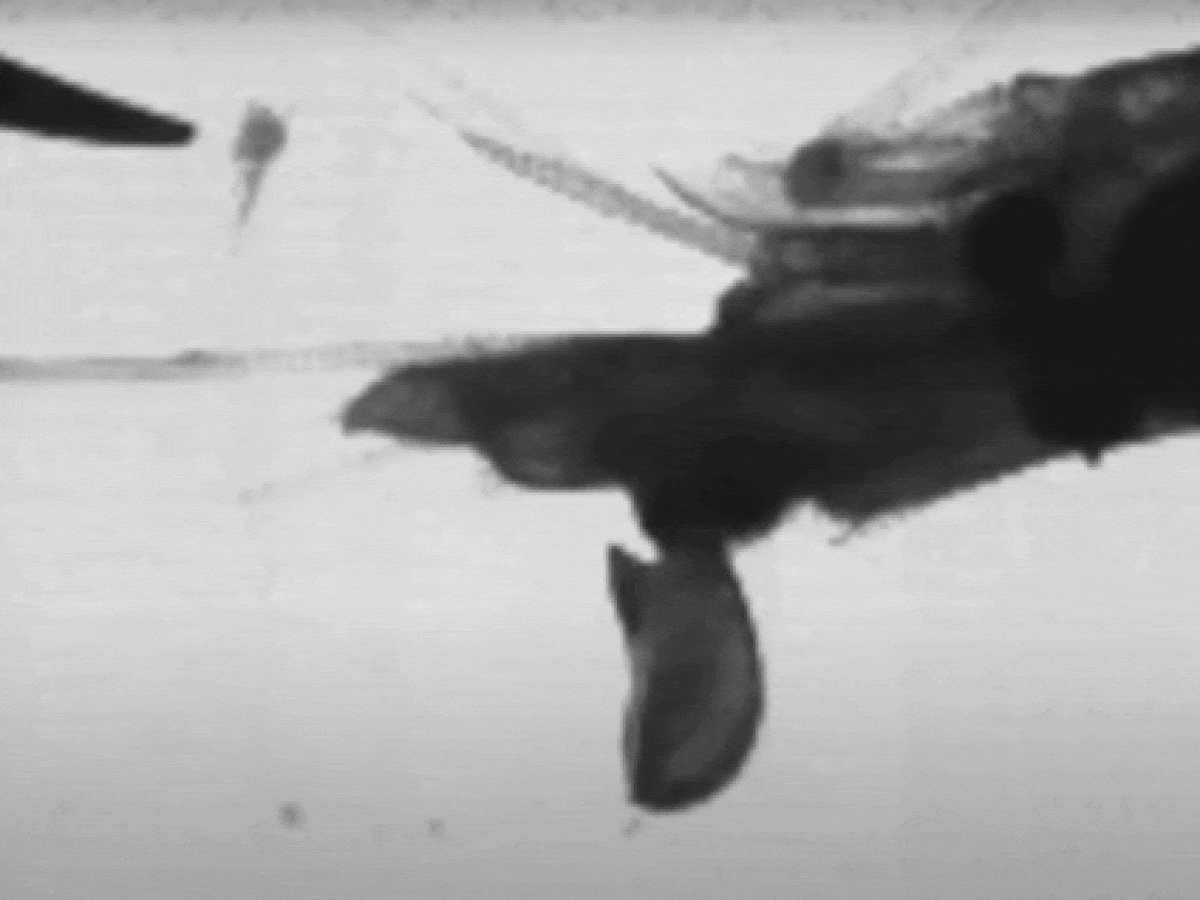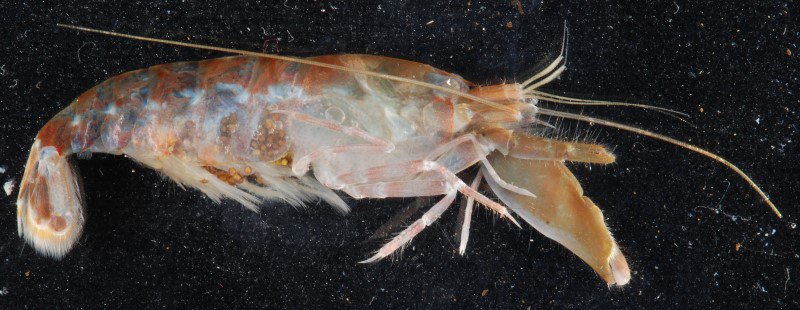These Young Shrimp Can Snap Their Claws as Fast as a Speeding Bullet
Juvenile snapping shrimp can achieve the fastest acceleration of any repeatable, underwater motion by a living thing, per a new study

Snapping shrimp—also called pistol shrimp—might have the mightiest claws of all creatures in the ocean.
With a powerful snap of this spring-loaded appendage, the tiny crustaceans shoot out a prey-stunning air bubble—when it pops, it releases a shock wave, a flash of light and a noise about as loud as a gunshot.
“We can’t see the bubble with our naked eyes, it happens too fast, but we can hear when the bubble collapses,” Jacob Harrison, a biomechanics researcher at the Georgia Institute of Technology, says in a statement.
The adult snapping shrimp’s rapid claw click is one of the fastest-accelerating repeatable body movements ever recorded underwater. But now, in a new study published in the Journal of Experimental Biology, researchers report that juvenile snapping shrimp have broken that record, accelerating their claws shut about 20 times faster than their parents. They even beat the famous punch of the mantis shrimp, reports Catherine Offord for New Scientist.
To study the juveniles’ feat, Harrison, who at the time was a researcher at Duke University, and his colleague collected eggs from four female bigclaw snapping shrimp and reared the babies until they were about a month old. They then chose five juveniles of varying sizes from each clutch and recorded their striking behavior using a camera attached to a microscope. To prompt the snapping, the researchers agitated the shrimp with toothpicks.
At first, they tried filming at 50,000 frames per second, the frame rate used to record adult claw movements, but the results were just a blur, per New Scientist.
“It was like, ‘Wow, these guys are really cooking,’” Harrison tells the publication. He raised the frame rate to 300,000 frames per second and, over a three-week period, filmed 281 strikes from all 20 individuals.
Harrison analyzed 125 of the maneuvers to calculate the acceleration of the top claw as it clamped down. He found that the juveniles’ claws reached an acceleration of 580,000 meters per second squared—about as fast as a bullet and 20 times faster than an adult shrimp, which shuts its claws with an acceleration of 30,000 meters per second squared.
He discovered that even the smallest individuals—those weighing just 0.03 milligrams—could occasionally produce an explosive bubble.
“I was completely ecstatic,” he says in the statement. “This snapping shrimp was about the length of a staple, and it could move fast enough to cavitate water,” or form a bubble.

While the juveniles’ ability to create bubbles was inconsistent, they often tried snapping anyway. These youngsters might have been training their claws for future bubble shooting, researchers say. This routine could be key to how the claws function, Kate Feller, a visual ecologist at Union College who was not involved in the study, tells Science News’ Jake Buehler.
“If you were to somehow manipulate the claws so that they couldn’t properly close and they couldn’t snap,” she says to the publication, “would that affect their ability to develop these mechanisms?”
While some terrestrial animals can accelerate body parts quicker than the snapping shrimp—dracula ants and some termites can clamp their jaws in powerful bites—these creatures are pushing against air, not water. In the ocean, jellyfish can shoot out their harpoons about 100 times as fast as the shrimp, but the action is not repeatable.
“These snapping shrimp have these crazy high accelerations,” Harrison tells New Scientist. “But they can do it in water, and they’re doing it repeatedly.”

